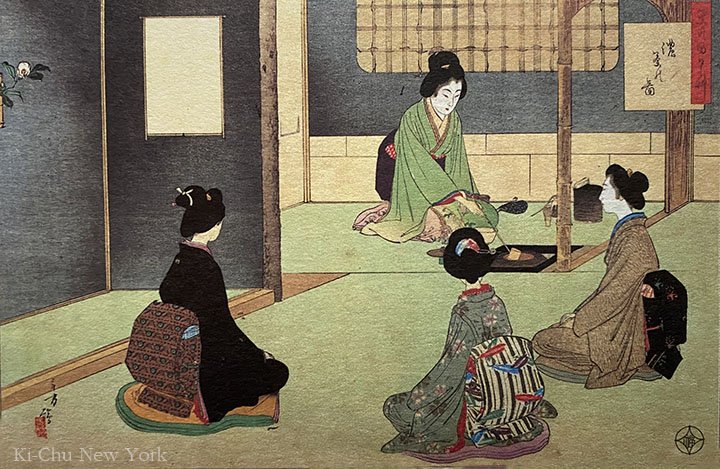Time flies—we’re already halfway through the year. Every June, I return to a quiet ritual that helps me slow down: making Minazuki, a traditional Japanese sweet that invites me to pause, reflect, and reconnect with the season.
Minazuki is also the traditional name for June in Japan, meaning “the month of water.” It reflects the rainy season when rice fields are nourished and full.
Minazuki (水無月), a traditional Japanese sweet in June
In Kyoto, a Shinto ritual called Nagoshi no Harae is held at shrines on June 30th. This purification ceremony is meant to wash away the “sins and impurities” accumulated in the first half of the year. On that day, people eat the sweet called Minazuki and pray for good health and fortune. The triangular shape of the sweet symbolizes ice, once precious for staying cool in summer. The red azuki beans are believed to ward off evil spirits.
Made from white Uiro-mochi topped with sweet red beans and cut into triangles, Minazuki may look simple, but it takes several days to prepare. I always make sure to carve out time for it in my calendar.
The red beans are simmered gently in water and sugar, then dried overnight. The next day, the process is repeated: simmering, drying, and repeating. It’s time-consuming and, to be honest, a little tedious. But it’s a sweet that can only be enjoyed during this season, and I find myself looking forward to it each year.
One of the quiet joys of June is wrapping the finished Minazuki in a hydrangea-patterned furoshiki, a nod to the flower of the season. I carry it to class and share it with my tea teachers and fellow students.
Minazuki, wrapped in a hydrangea-patterned furoshiki
Japan is rich in ancient customs deeply tied to the rhythms of nature. These preparations take time and care, and in our fast-paced lives, they can feel like a burden. But I’ve come to believe that doing something slowly and with intention is a form of quiet luxury.
Wearing a kimono, sitting silently in a tea room, and sharing seasonal sweets with a bowl of matcha. These are simple moments, but they warm the heart and calm the spirit.
These rituals, passed down for generations, follow the cycles of the sun and moon. They remind me of where I am in the rush of modern life. We now live in a world where it’s hard to imagine life without computers or smartphones. I don’t know how far technology will go, but I do know this: I want to stay grounded. I want to focus on what’s meaningful, right in front of me, and savor it fully.
Wishing you health, peace, and joy in the second half of the year.
Hydrangea (紫陽花)-June flower







